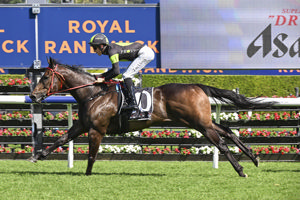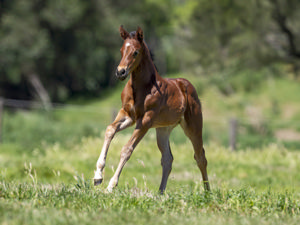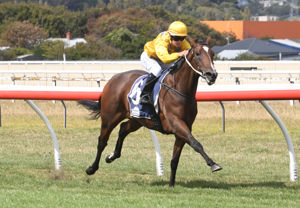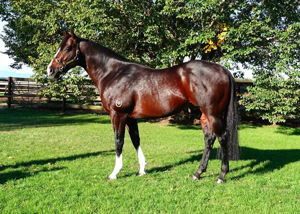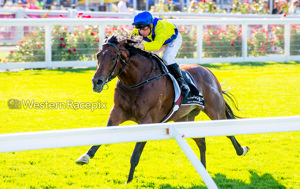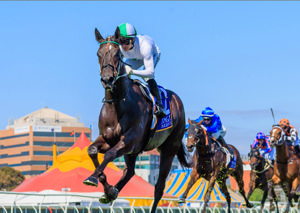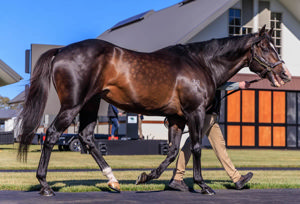Seasons greetings to you all!
At this time of the year, racing related taxation releases from the ATO or relevant court decisions tend to be hard to find.

Amidst this temporary XMAS/New Year lull, I am forced to go beyond the more publicly available taxation information to trawl the ATO publicly available register for a Private Ruling that the industry would find newsworthy. I can uncover the odd gem, which thankfully I have just done and will make the focus of this article.
Whether an activity is a ‘Business or Hobby’ is a perennial hot topic within the breeding/racing industry. The consequences of being classed as a hobby is that the activity is ignored for tax purposes, i.e. any losses cannot be claimed, and GST credits are unavailable. In this case, the taxpayer trust was successful in demonstrating to the ATO that an income tax ‘business’ and GST ‘enterprise’ was being conducted, so at least I have a little festive joy to share too.
- Private Ruling System
If, per the ATO ‘self-assessment’ guidelines, a taxpayer and their advisers are uncertain on a particular income tax or GST issue, they can seek a definitive opinion from the ATO via the ‘Private Ruling’ system.
The ATO publishes these decisions on its web site register, however it is not bound by a published private ruling version published in relation to any taxpayer other than the taxpayer to whom the ruling was issued. An edited version is not intended to provide taxpayers with advice or guidance and is not a publication approved in writing by the Commissioner. However, a tax case has established that private rulings were “useful” in illustrating the way in which the ATO has applied the relevant legislation and authoritative case law.
- Business or Hobby private rulings
Whether a horse breeding activity is a ‘business or hobby’ for income tax purposes, or an ‘enterprise’ for GST purposes, continues to be a subjective and difficult dilemma for tax advisers.
Though these private rulings are specific to a taxpayer’s situation, case law has indicated that they are indeed ‘useful’ in gauging the ATO’s current opinion on this ‘business or hobby’ issue.
The ruling decision I will share (ATO Ruling Authorisation Number: 1052161433314), issued in November 2023, and relates to whether a newly formed discretionary trust could demonstrate that their horse breeding activity was, as noted above, is a ‘business’ for income tax and ‘enterprise’ GST purposes.
The two ruling questions were:
Q1 - Is the Trust carrying on a business of primary production horse breeding for the purposes of Section 995-1 of the Income Tax Assessment Act 1997 (ITAA 1997)?
Q2 - Is the Trust carrying on an enterprise for the purposes of section 9-20 of the A New Tax System (Goods and Services Tax) Act 1999?
The answer was YES to both questions.
Note, the ATO private ruling register only issues an ‘edited’ ruling decision where, for reasons of privacy, names and other specific details are not disclosed.
I will now take you through the ruling facts and make comments as to why ATO and case law business or enterprise factors were met.
- Relevant facts, circumstances and associated comments
- The scheme commenced on 1 July 2023.
- Company A is the trustee for the Trust.
- Company A as trustee for the Trust was established and controlled by Person A.
- Company A’s sole Director will oversee the strategic direction, utilising his prior experience from family-owned racehorses and his personal interest in horses.
Comment
Experience, capability and expertise of the controller is a significant business factor.
- The Trust received funding from the Trust's parent entity, Company B.
Comment
The trust must have the funds to carry out its business objectives.
- The Trust operates to breed and trade horses for the purpose of racing and creating breeding lineages.
- The Trust has a business plan to purchase mares who will than mate with commercial stallions. The resulting foals are to be sold as weanlings or yearlings at major Australasian weanling and yearling sales.
Comment
The existence of a Business Plan is a crucial business indicator as it indicates sufficient research has been undertaken and there is an intention to operate in a commercial and business-like manner.
- The Trust has insured the Trust's bloodstock with a commercial insurance provider - Insurer A.
Comment
Insuring of stock means alleviating risk at a significant cost, a strong business indicator.
- The Trust's mares are acquired either directly during major broodmares sales and auctions, or purchased by Person A in his personal capacity, and subsequently transferred into the trust.
- The Trust chooses to only purchase mares who are in foal to reduce wait times. These mares were serviced by horses with a history of producing high value foals.
- The Trust seeks to add at least 1-2 broodmares a year, in order to have a medium-term target of 10 high quality broodmares. This should lead to sales of 8 yearlings a year to sell assuming 1 to 2 fail to produce a foal.
- The Trust owns three mares.
- Mare A - sired from a multiple champion sire, Sire A. Mare A was acquired in April 20XX at a Dispersal Sale. She was purchased by person A in his personal capacity and was subsequently transferred to the Trust.
- In the 20XX breeding season, Mare A was serviced by Stallion A and has foaled a filly. In the next season, Mare A will be serviced by Stallion B.
- Mare B - sired from a multiple champion Sire B. Mare B was acquired in May 20XX at a Broodmare Sale. She was purchased by person A in his personal capacity and was subsequently transferred to the Trust.
- In the 20XX breeding season, Mare B will be serviced by Stallion C.
- Mare C - race mare, having won multiple races, including 1 race as a 2-year-old and multiple city races who has previously produced two foals. Mare C was acquired by the Trust in May 20XX at a Broodmare Sale, already in foal. In the upcoming breeding season, Mare C will be serviced by Stallion D.
Comment
There is scale and strong prospect of profit for any foals out of the above mares purchased. They are commercial, have a sound breeding history and have been mated to quality stallions. Acquiring mares “in-foal” also accelerates when income will be derived by the trust. All these characteristics are strong business indicators.
It is worth noting that no racehorses were amongst these early acquisitions.
- The Trust mares had two births occur in the 20XX financial year. One of the foals passed away and the Trust collected an insurance payout. Another foal is being prepared for sale in an early 20XX yearling sale.
Comment
There must be a selling mentality and the fact that a foal is being sold so soon after business start-up is a positive business indicator.
- The Trust covered two of the mares during the 2023 financial year. Their stallion fees varied from $15,000 to $50,000.
Comment
Mating of mares indicates ‘regularity of activity’. The ATO would have looked upon this favourably in deciding a ‘business’ exists.
- The Trust expects to make on average $120,000 - $200,000 on sales of the foals when they become yearlings.
Comment
Strong and recurring sales is a strong ‘prospect of profit’ indicator.
- The Trust also plans to participate in the purchase of weanlings and overseeing them till they are yearlings. The Trust will resell them as yearlings, a practise referred to as pinhooking.
- The Trust expects to buy weanlings for $50,000 to $100,000 and then sell them for a profit.
Comment
Continued investment indicates ‘consistent growth’ and a long-term commitment to the activity. The ‘pin-hooking’ is a good way of alleviating risk and diversifying income streams, especially as mares may not necessarily generate a foal every year.
- The Trust hires an advisor, Person B, with over 30 years of experience. In addition, the Trust utilises the services of Person C and Person D.
Comment
The use of experts and consultants indicates a strong profit intention and a ‘business’ mentality. This factor has gained greater priority with the ATO in the past few years.
The Trust keeps Mare A and Mare B and their respective foals at Facility A for agistment. Facility A is operated by Person E and Person F who focus on the rearing and development of weanlings.
- The Trust hires Firm A to act as accountant and business advisers.
Comment
Bias aside, using a specialist accounting firm to oversee the activities is an excellent ‘business intention’ indicator.
- The Trust is conducting marketing and branding for the business, with all foals being stamped with the branding.
Comment
Personal marketing, promotion and branding is a strong sign of profit intention.
- The Trust's profit projections from 2024 to 2026 show profits.
- The Trust supplied documents to verify the purchase and pedigree of horses.
- The Trust provided a tax invoice for the services of person B.
- The Trust provided a profit and loss statement for the 2023 financial year.
Comment
Keeping of proper records is another crucial business indicator, and the factors noted above demonstrate this strongly.
- Since the end of the 2023 financial year, two of the covered mares have each foaled a filly and the Trust has signed services agreements for all three mares for the 2023 upcoming breeding season.
- The Trust will not race the horses.
Comment
A breeding activity can race ‘home-breds’ and future breeding prospects under most circumstances, however a business case is enhanced by not racing any off-spring.
Please do not hesitate to contact the writer if you wish for me to clarify or expand on any of the matters raised in this article.
PAUL CARRAZZO CA, CPA
Partner - Baumgartners
1/35 Cotham Rd, Kew, VIC, 3101
TEL: +61 3 9851 9000
MOB: 0417 549 347
E-mail: p.carrazzo@baumgartners.com.au


